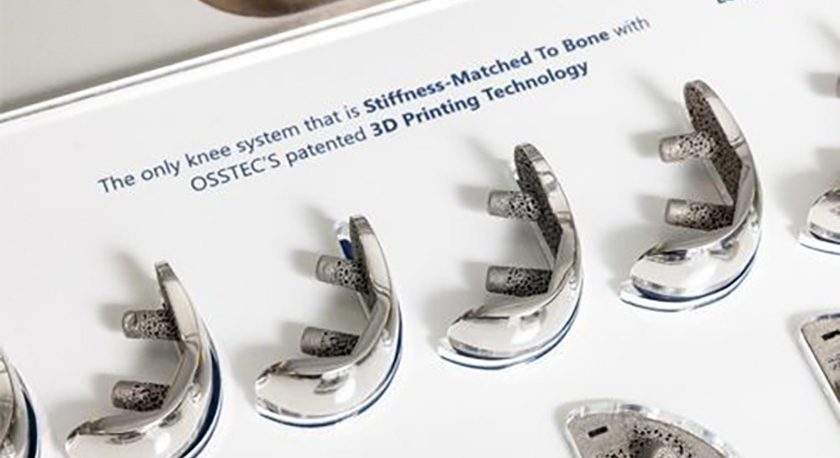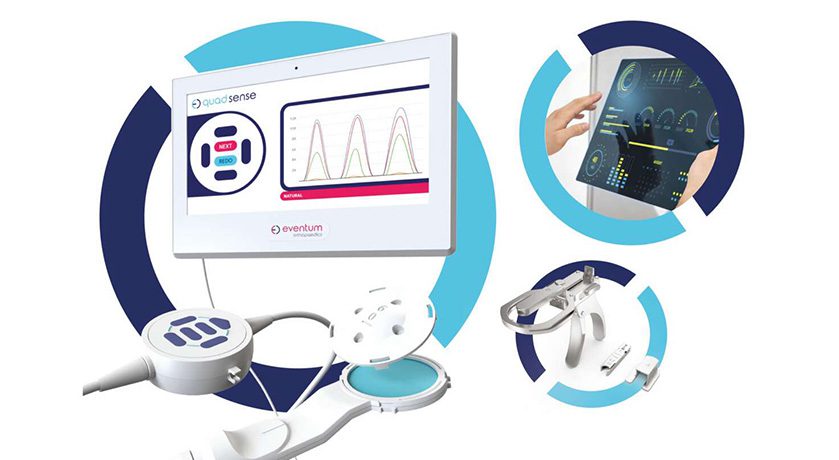

 Copy to clipboard
Copy to clipboard 
We estimate orthopedic sales for the second quarter of 2022 were essentially flat against a difficult comparison in the prior year. Hospital staffing shortages, shifting capital sales models and volatile international markets created a choppy end to the first half.
Orthopedic Procedure Volumes Constrained by Hospital Staffing Shortage
Several orthopedic companies reported baseline procedure volumes at pre-COVID levels. However, hospital staffing shortages constrained capacity and kept some players from realizing the benefits of volume recovery. Rising COVID infections further impacted the already taxed healthcare workforce. Zimmer Biomet said it saw more procedure cancellations due to COVID starting in June and continuing into the third quarter.
While most players said that they expect conditions to improve through the year gradually, the staffing shortage eliminates the possibility of a rapid backlog recovery. Medtronic CEO Geoffrey Martha said, “We don’t put a bolus of lost sales into our guidance. There is a governor on procedures with the healthcare worker shortage. It’s still hard for customers to run at 110%, 120% of pre-COVID levels.”
Robotics Shifting Away from Outright Sale Model
Despite uncertain economic conditions, hospitals aren’t experiencing a liquidity crisis as they were during the financial meltdown of 2008. Still, hospitals are in cash preservation mode, driving a shift in the purchase of large capital equipment.
Stryker and Medtronic saw declining robotics revenue as outright capital sales give way to rentals and financing based on implant volumes. However, both companies leveraged the shift in sales models to grow their base of installed robots meaningfully. Stryker reported a 19% increase in Mako installations compared to the second quarter of 2021.
Not every company is following the rental or earnout path, though. Globus Medical reported enabling technology sales of $29 million, setting quarterly revenue records for domestic and international sales. Company CEO Dan Scavilla said, “I would tell you that we continue to sell. We’ve always had different mechanisms for the customer to purchase. We haven’t shifted off that. And we haven’t seen the pressure to shift off that to date.”
Chinese Market Remain Volatile
Macroeconomic pressure, COVID lockdowns and volume-based procurement created an especially tough Chinese market for orthopedic companies in the second quarter. While the COVID situation will improve, VBP will remain a significant headwind for impacted companies. Smith+Nephew estimated its second-quarter impact at $20 million, while Medtronic saw declining sales in China due to a looming national tender on spine products. ZimVie’s international sales fell -34%, partially due to the impending spine tender.
Most Companies Reiterated Previous Revenue Guidance
Of the public companies in our coverage universe, more than half (52%) reiterated previous revenue guidance for 2022. The rest were almost evenly split between increasing guidance (26%) or lowering guidance (22%). Companies that lowered guidance, such as CONMED, Orthofix and ZimVie, tended to have significant exposure to the Chinese market or currency translation headwinds. Players like ATEC, Paragon 28 and Treace Medical Concepts raised guidance as they win market share and fill geographic gaps.
We expect the third quarter to be sequentially flat or slightly below the second quarter, with a modest ramp and normal seasonality leading to a strong fourth quarter.
We estimate orthopedic sales for the second quarter of 2022 were essentially flat against a difficult comparison in the prior year. Hospital staffing shortages, shifting capital sales models and volatile international markets created a choppy end to the first half.
Orthopedic Procedure Volumes Constrained by Hospital Staffing Shortage
Several...
We estimate orthopedic sales for the second quarter of 2022 were essentially flat against a difficult comparison in the prior year. Hospital staffing shortages, shifting capital sales models and volatile international markets created a choppy end to the first half.
Orthopedic Procedure Volumes Constrained by Hospital Staffing Shortage
Several orthopedic companies reported baseline procedure volumes at pre-COVID levels. However, hospital staffing shortages constrained capacity and kept some players from realizing the benefits of volume recovery. Rising COVID infections further impacted the already taxed healthcare workforce. Zimmer Biomet said it saw more procedure cancellations due to COVID starting in June and continuing into the third quarter.
While most players said that they expect conditions to improve through the year gradually, the staffing shortage eliminates the possibility of a rapid backlog recovery. Medtronic CEO Geoffrey Martha said, “We don’t put a bolus of lost sales into our guidance. There is a governor on procedures with the healthcare worker shortage. It’s still hard for customers to run at 110%, 120% of pre-COVID levels.”
Robotics Shifting Away from Outright Sale Model
Despite uncertain economic conditions, hospitals aren’t experiencing a liquidity crisis as they were during the financial meltdown of 2008. Still, hospitals are in cash preservation mode, driving a shift in the purchase of large capital equipment.
Stryker and Medtronic saw declining robotics revenue as outright capital sales give way to rentals and financing based on implant volumes. However, both companies leveraged the shift in sales models to grow their base of installed robots meaningfully. Stryker reported a 19% increase in Mako installations compared to the second quarter of 2021.
Not every company is following the rental or earnout path, though. Globus Medical reported enabling technology sales of $29 million, setting quarterly revenue records for domestic and international sales. Company CEO Dan Scavilla said, “I would tell you that we continue to sell. We’ve always had different mechanisms for the customer to purchase. We haven’t shifted off that. And we haven’t seen the pressure to shift off that to date.”
Chinese Market Remain Volatile
Macroeconomic pressure, COVID lockdowns and volume-based procurement created an especially tough Chinese market for orthopedic companies in the second quarter. While the COVID situation will improve, VBP will remain a significant headwind for impacted companies. Smith+Nephew estimated its second-quarter impact at $20 million, while Medtronic saw declining sales in China due to a looming national tender on spine products. ZimVie’s international sales fell -34%, partially due to the impending spine tender.
Most Companies Reiterated Previous Revenue Guidance
Of the public companies in our coverage universe, more than half (52%) reiterated previous revenue guidance for 2022. The rest were almost evenly split between increasing guidance (26%) or lowering guidance (22%). Companies that lowered guidance, such as CONMED, Orthofix and ZimVie, tended to have significant exposure to the Chinese market or currency translation headwinds. Players like ATEC, Paragon 28 and Treace Medical Concepts raised guidance as they win market share and fill geographic gaps.
We expect the third quarter to be sequentially flat or slightly below the second quarter, with a modest ramp and normal seasonality leading to a strong fourth quarter.

You are out of free articles for this month
Subscribe as a Guest for $0 and unlock a total of 5 articles per month.
You are out of five articles for this month
Subscribe as an Executive Member for access to unlimited articles, THE ORTHOPAEDIC INDUSTRY ANNUAL REPORT and more.
ME
Mike Evers is a Senior Market Analyst and writer with over 15 years of experience in the medical industry, spanning cardiac rhythm management, ER coding and billing, and orthopedics. He joined ORTHOWORLD in 2018, where he provides market analysis and editorial coverage.







